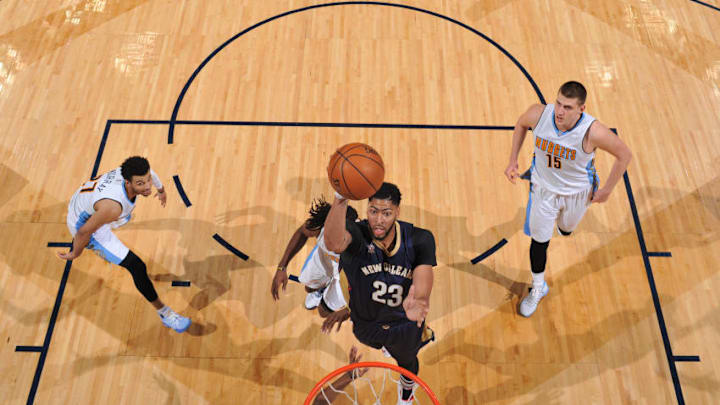This article is the first in a series about every Pelicans’ most important goal for the 2017-2018 season.
Anthony Davis is definitely a major force in the NBA with a ton of offensive tools. However, in the past two years, Davis has seen a decrease in field goal percentage, which has plagued his overall offensive value.
In fact, last year, despite averaging 28 points per game, Davis’s offensive real plus-minus sat at .45, which was just 13th among power forwards.
Now, although this number, along with his 50.5% field goal percentage, are above average Davis’ numbers have the potential to be substantially higher.
In 2014-2015, for example, despite scoring 3.6 fewer points per game, Davis’s ORPM was 3.98, good enough for 14th in the league, and first among power forwards. In 2014-2015, Davis’ FG% also sat at 53.5%.
Although there are multiple reasons why Davis’ 2014-2015 campaign was a full 3.53 ORPM better, including a 2.8% lower turnover percentage in 2014-2015, and a team which was simply superior. A large component of the discrepancy has to do with his decreased field goal percentage.
Now, the next question that arises is how can Davis revert closer to his older field goal percentage? Well, a large contributor to Davis’ drop in field goal percentage has been his underwhelming three-point shooting efforts. Last season, Davis took 134 threes and hit on just 29.9% of them.
This has had a negative effect on his field goal percentage, as well as his effective field goal percentage. Last year his two-point percentage was 52.5%, but his effective field goal percentage was just 51.8%. This means that Davis is more effective as a non-three-point shooter, and should resist taking many three-pointers, unless he has improved his stroke significantly in the offseason.
Furthermore, Davis should look to take less midrange shots. This might be a bit more difficult for Davis, as he has been in the top five for midrange field goal attempts per game every year since 2014-2015, however, this has never been an efficient shot for Davis or for almost any player in the NBA.
Davis shot 42.8% from midrange on 7.6 attempts per game last year and 43.5% on two-pointers ten or more feet from the basket when he was open (when defenders were four to six feet from him). Despite his midrange shooting percentage technically being about 2.5% above average, these shots are not inherently efficient.
Meanwhile, Davis is one of the most prolific finishers in the league. He shot 68.5% in the restricted area, and should try to get to the basket more in pick and roll opportunities, instead of opting for elbow jumpers. When given the ball within or around the arc, Davis should utilize his almost point guard-like handles on drives, to get a better look at the basket.
It’s unlikely Davis will take midrange shots out of his game completely but if Davis were to shoot four mid range shots per game, instead of 7.6, it would do wonders for his field goal percentage.
If Davis is able to get his field goal percentage in the 52% to 55% range, like he was able to in 2014-2015, he would definitely be a lot more offensively valuable. He did have a bit of an excuse with a bad roster around him for the majority of 2016-2017, which would set him up for worse shots.
Next: Ranking every New Orleans Pelicans offseason move
With DeMarcus Cousins now on the team for a full year, he should reap the field goal percentage benefits that come with having a worthy co-star.
